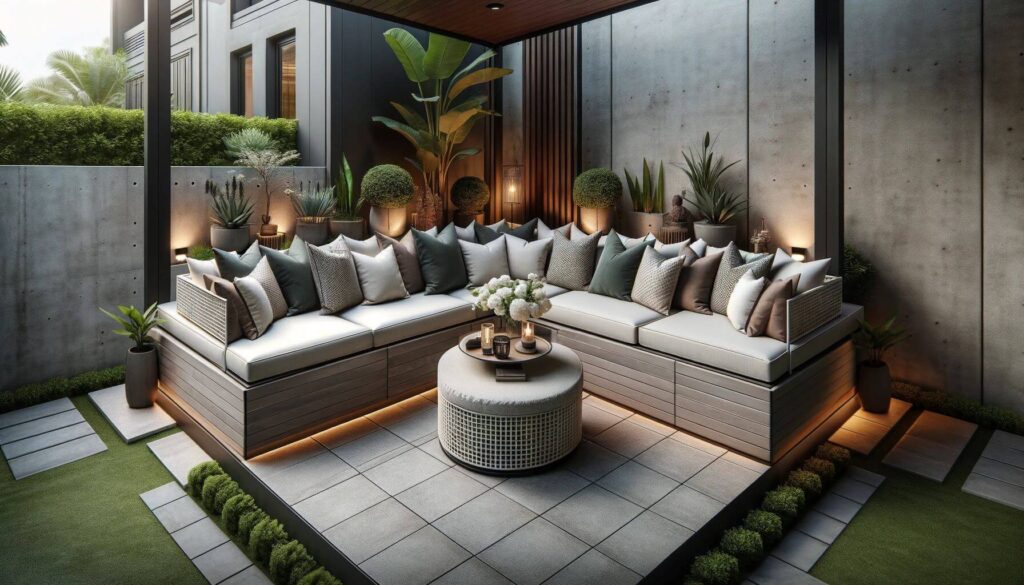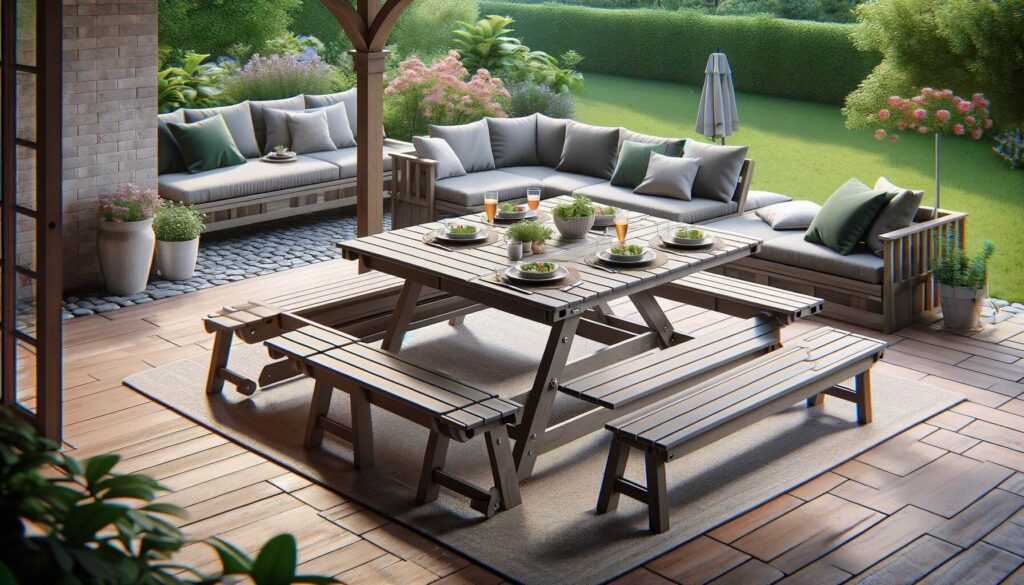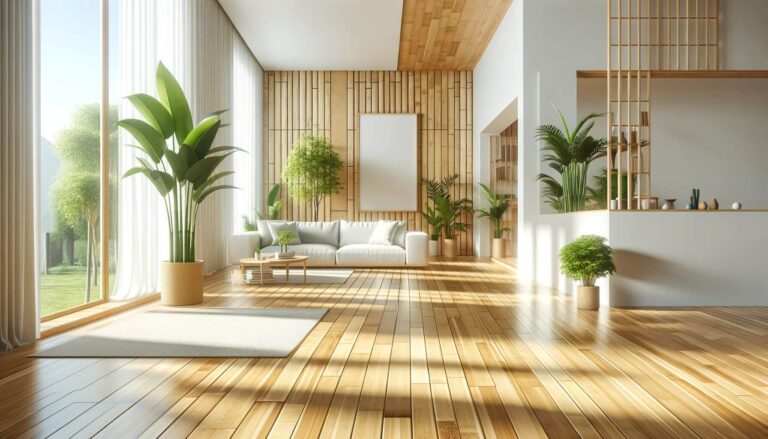
When it comes to outdoor furniture, the debate between Polywood and traditional wood is ongoing. Both materials have their advocates and their distinct sets of benefits. In this article we will try to provide a detailed comparison to help you decide which material might be best for your outdoor space.
Durability and Maintenance
Weather Resistance
Polywood excels in environments exposed to harsh weather conditions. Unlike traditional wood, which can warp, crack, or rot when exposed to elements, Polywood maintains its integrity. It’s impervious to rain, snow, salt spray, and sun.
Maintenance Needs
Polywood offers a significant advantage in maintenance. It needs only occasional cleaning with soap and water. Wood, however, may require annual treatments with stains or preservatives to maintain its appearance and durability.
Aesthetic and Design Flexibility

Aesthetic Appeal
Traditional wood is prized for its natural look and warmth, which can be integral to creating a certain ambiance. Polywood, however, is available in a wide range of colors and styles. While it mimics the texture and grain of wood, it doesn’t offer the same organic look.
Customization and Variety
Polywood furniture is manufactured in a variety of modern and traditional designs and can be customized in many colors. Wood furniture, while customizable in terms of design, often comes in its natural color or whatever stain is applied during finishing.
Environmental Impact

Sustainability
Polywood is made from recycled plastics, making it a friendlier option for the environment. By purchasing Polywood, you’re supporting the reduction of plastic waste. Traditional wood furniture, unless sourced from sustainable forests, can contribute to deforestation.
Lifecycle Analysis
Polywood also lasts longer than most wood types, which means it won’t need to be replaced as often. This longevity contributes to its sustainability, as less waste is generated over time.
Cost Considerations Polywood Versus Traditional Wood
Initial Investment
Initial costs for Polywood are generally higher than traditional wood due to its manufacturing process. However, considering its durability and low maintenance needs, it can be a more cost-effective option over time.
Long-Term Savings
Wood furniture may seem cheaper at first, but it can incur higher costs over time from maintenance and potential replacement needs. Polywood, with minimal upkeep costs and longer lifespan, often presents better value.
Polywood Versus Traditional Wood: What to Choose
Choosing between Polywood and traditional wood for your outdoor furniture depends on several factors including your budget, design preferences, maintenance capacity, and environmental concerns. Polywood offers modern technology, ease of maintenance, and environmental sustainability, making it an excellent choice for those who value convenience and long-term investment. On the other hand, traditional wood furnishes a classic look and natural feel that can be worth the extra care for those who prioritize aesthetics. Weigh these factors carefully to make the best choice for your outdoor living space.



